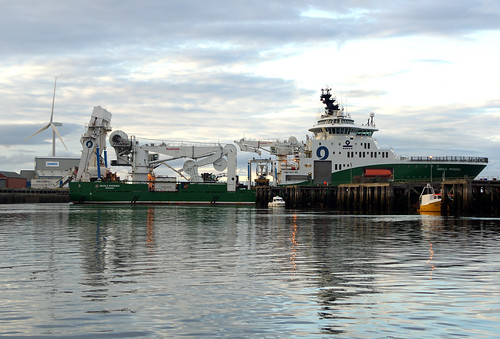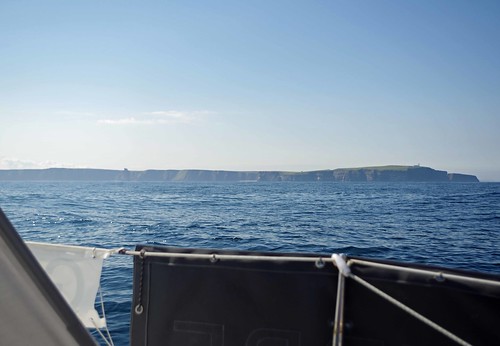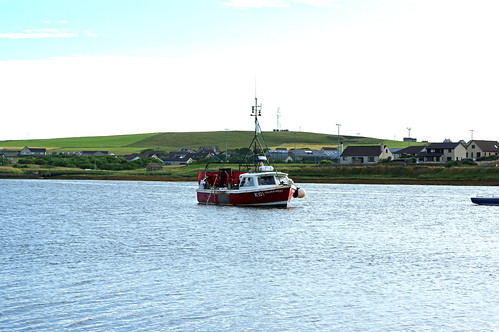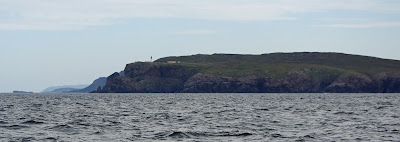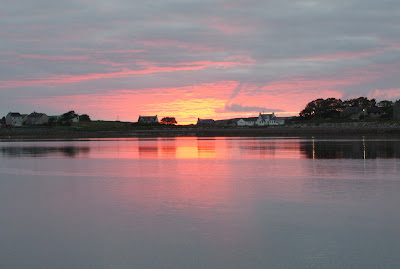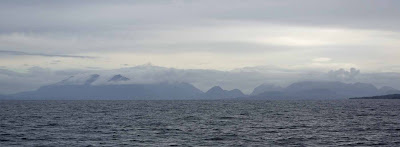So
on Monday evening I was in the marina 985 miles into my round UK trip with no
propeller and several stretches of water where sailing single handed without
mechanical propulsion would not be sensible, to say the least, so it had to be
fixed.
Fortunately,
I have a spare propeller but at home and in the garage probably buried under
heavy things my wife would not be able to move, so help was called in and my recollection
of where I had left it was correct or not far off and it was packaged ready to
go by late afternoon. Finding a courier to do a pick up and delivery to Orkney in
a sensible timescale took rather longer. Particularly annoying on several sites
there was no indication of timescales and on others you only found out it would
take a week after filling all the details through to payment. Finally, I
settled on DPD who “promised” a two-day delivery and a pick up was booked for
Tuesday.
That left a lot of time for speculation on the owners group web site as to why a new
prop (fitted last winter) should come off, the only thing that was obvious was
that the locking allen screw had not done it’s job, probably because the thread
locker had not worked and being towed at 11 knots had probably not helped.
Update: After Sancerre was lifted and the prop and rope cutter were removed for maintenance it became evident that the rope cutter had chewed on something serious, fortunately the damage was repairable but it may explain how the prop was loosened. When putting the engine into gear on route to Plymouth there was a loud bang which at the time I thought was the rope cutter in action, although others suggested it was the prop not opening correctly, it took several changes in gear from forward to astern to clear what ever it was - probably a rope, net or both. It is possible that this was also tangled around the prop, at least after trying to go astern to clear it. The strain was clearly a lot more than I had originally thought and its possible that this loosened things enough that a fast tow finished the job.
I
had left the old retaining nut onboard and a local marine engineer cut and
shaped the “key” necessary to stop the prop rotating on the shaft, and a
local boat builder swapped a stainless split pin long enough to fit with some
of my shorter rigging split pins.
With
a GPS track and my recollection of what happened since the last time the prop
was obviously there, which was only a few tens of yards away, it was worth
looking for the prop and a diver spent some time looking for it but to no
avail, it was buried in a metre of fine silt and nowhere to be seen even in the
very clean water.
The
package finally turned up on Friday, probably having missed the ferry on
Wednesday and I spent 3 hours fitting the key to the prop and removing much of the
crud on the propeller. The diver came back on Saturday and had the propeller on in a little over an hour. Whilst he was waiting for me to shorten and
file the key to fit the shaft he gave the boat a quick scrub and the whole
thing, including the key, postage and a generous tip for the scrub, cost less than a scrub would have done on
the Hamble.
Many
thanks to all concerned in getting the job done.
It
looks like I will be in Orkney until Wednesday, there were strongish F4-5
headwinds yesterday and today it’s 15 knots in
the marina and similar is forecast for tomorrow. Apart from gentlemen not sailing up wind, that against a 6
or 7 knot tide (more in places) going through the Pentland Firth, could create
very uncomfortable and dangerous seas. From Wednesday there should be following
winds albeit somewhat light and variable for several days for me to get to
Lindisfarne probably with 2 or 3 stops on the way.
The marina was very reasonable priced at £100 for a week, run largely by volunteer boat owners as are other marinas on the islands.





